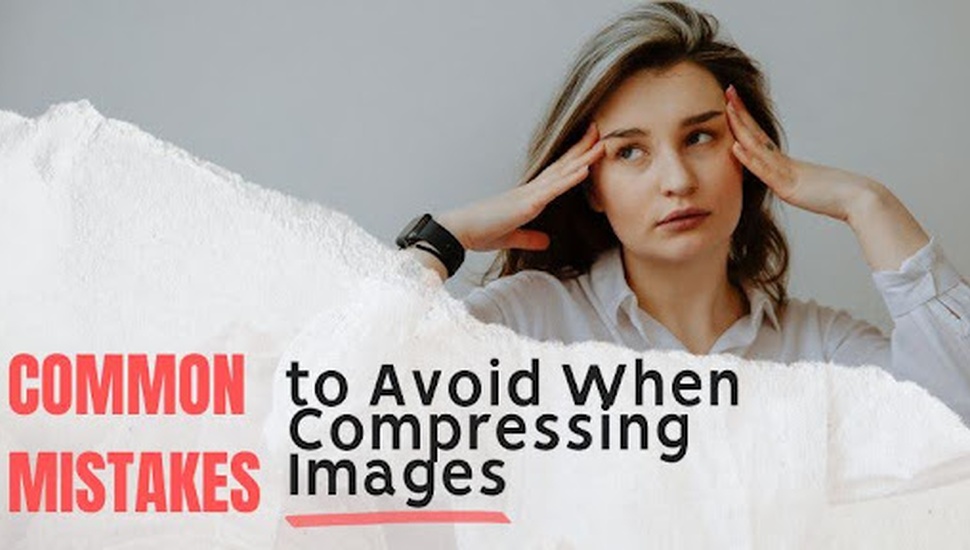
By dorjey
Tips and TricksAs a traveler, you could bring everything in your closet, but that would make for a huge, heavy suitcase and cost more to transport. Instead, you pick just the essentials and pack them into a single, manageable suitcase.
This scenario is akin to managing images on a website. Just as the traveler doesn’t need to bring their entire wardrobe, website visitors rarely need to view an image in its maximum resolution and largest dimensions.
Typically, an image can be reduced in quality and size without noticeable loss to the average viewer—this process is known as image compression. It retains the most significant information of the image without preserving every single pixel.
However, we often make mistakes while compressing our images, which can negatively affect image quality and performance. That’s why we provide you with this guide, to help you avoid common mistakes during the compression process.
When compressing photos, it’s essential to avoid such mistakes that partially or totally damage the quality and usability of the images. Here are some pitfalls to watch out for:
One common pitfall is over-compression, which can significantly degrade the quality of your images. It typically occurs when the compression settings are set too high. This is often done to speed up website load times, but it can come at the cost of visual quality.
For instance, you have a photo of a beautiful landscape. The original file size is 5 MB, and it looks crisp and clear. To make the website load faster, you decide to compress the image. You set the compression level to 90%, which converts the photo into 500 KB, which becomes too small.
However, when you upload the image to your website, you notice that your photo doesn't show clear detail and its texture got lost. This is because the high compression level discarded too much data, which irreversibly reduced visual quality.
Instead of setting the compression to the maximum level, try a moderate setting. For JPEG images, a compression level of 70-80% usually offers a good balance.
Quality is a crucial factor that influences both image performance and user experience on your website. It’s not just about how an image looks at first glance, but how its format, compression level, and dimensions all play a crucial role in shaping its visual appeal. If you overlook quality, you may encounter a host of problems.
However, if you start with a low-quality image, compression and resizing can make things worse, which turns the photo into pixelated, blurry, or less sharpened visuals. But, when you use the best quality version of an image from the start, you ensure that compression and resizing efforts retain as much of the original detail as possible, giving you a final result that looks professional and visually appealing.
Also, the tool you choose to compress the image will also decide whether the actual quality is preserved or deteriorated. Hence, if you want an image in 50KB size at max, you can get your hands on the compress JPEG to 50KB tool. This photo converter into 50 KB reduces the image size to this level while not harming its quality.
Choosing the wrong format when compressing images can significantly impact the quality and usability of the final product. Different formats, such as JPEG, PNG, GIF, and WebP, have distinct characteristics and are suitable for various types of images. For example, JPEG is ideal for photographs due to its ability to handle a wide range of colors, but it uses lossy compression, which can lead to quality loss.
Therefore, it’s important to consider the compression factors of different formats. It will allow you to take proactive measures to compress pictures accordingly.
When we resize our image, we mostly forget to save the original image as a copy. This oversight can lead to significant problems, especially if the resized image doesn’t meet your expectations. Because this process permanently alters its dimensions and potentially its quality. These changes can sometimes result in a loss of detail or clarity, which may not be immediately noticeable but can become problematic in later uses of the image.
Without a backup of the original, you’re stuck with the altered version. This could mean having to recreate the image or, in worse scenarios, losing it altogether if the original was a unique capture.
To avoid this mistake, always save an image copy in the original version before resizing it. This way, if the resized version doesn’t work out, you have the original as a safety net. This approach can save you time and frustration and ensure that you always have the best-quality image available for any of your needs.
Image compression or resizing can initially seem overwhelming, especially with the many potential errors you might encounter. Whether it’s choosing the wrong format or failing to resize before compressing, these common pitfalls can make the process daunting.
But don’t worry, this guide has equipped you with the knowledge to avoid these challenges with confidence. You can achieve optimal results by avoiding common mistakes and employing specific techniques, selecting the right format, resizing images before compression, and using a dedicated photo compressor effectively. With these tips in hand, you’re well-prepared to handle photo compression and resizing with ease.